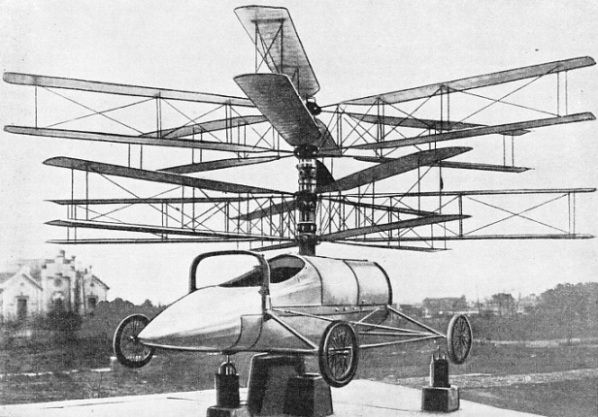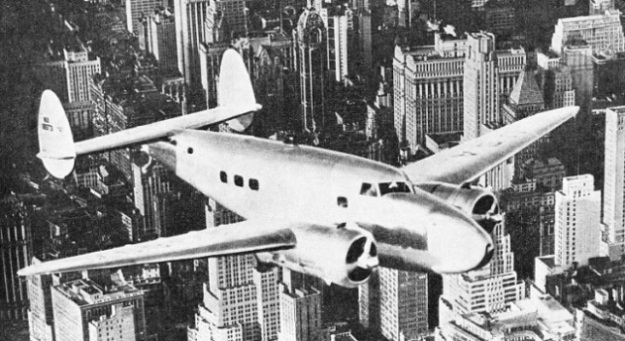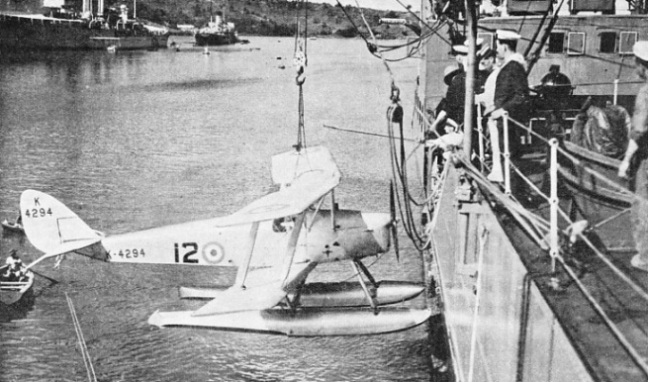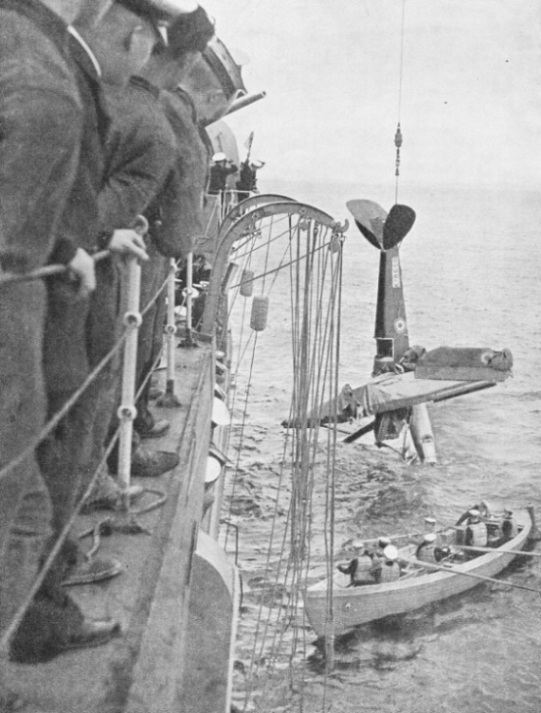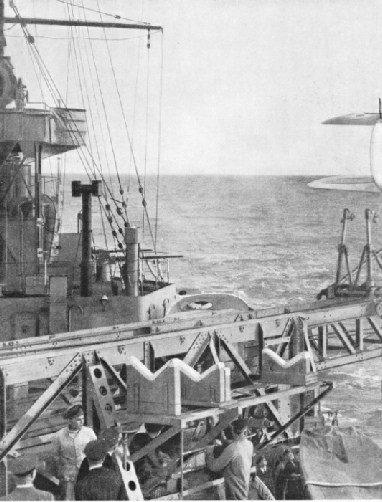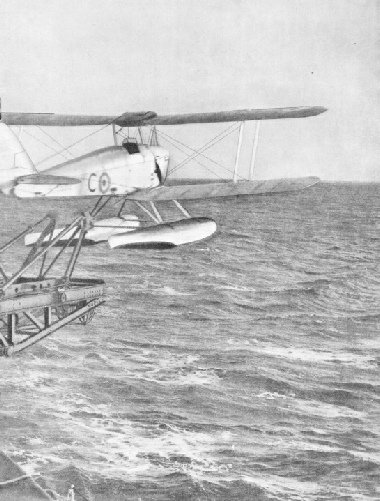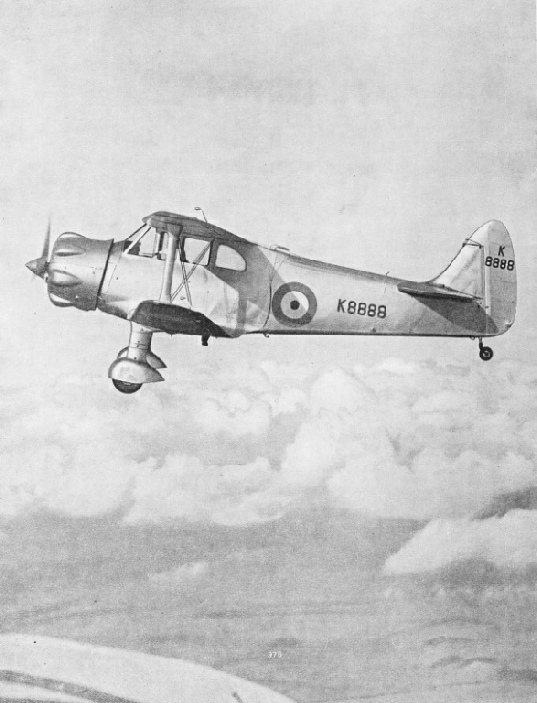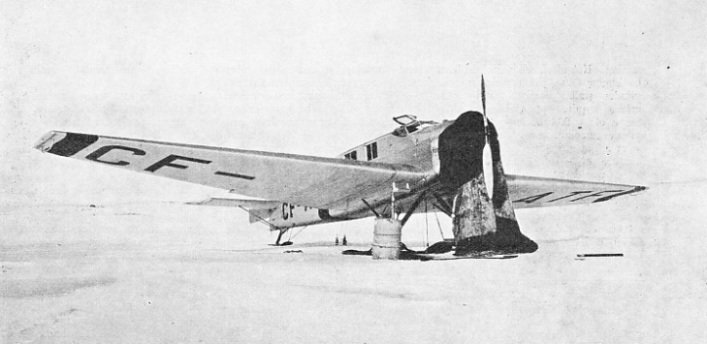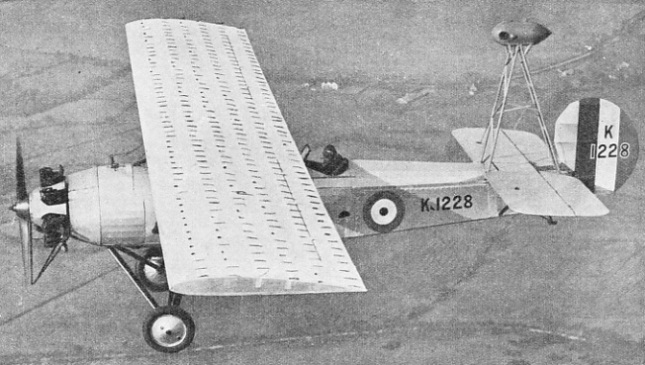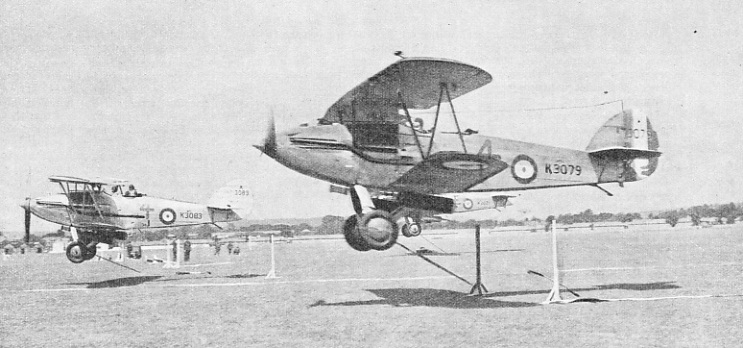
© Wonders of World Aviation 2015-




Part 36
Part 36 of Wonders of World Aviation was published on Tuesday 8th November 1938, price 7d.
This part included a central photogravure supplement further illustrating the article on Pilotless Aircraft which further illustrated this chapter.
The Cover
This week’s cover shows one of the aeroplanes which escorted Their Majesties King George VI and Queen Elizabeth on July 19, 1938, across the Strait of Dover on the occasion of their State visit to France. The aircraft illustrated is an Avro Anson; this is a twin-engined coastal reconnaissance low-wing monoplane. It has two Armstrong Siddeley Cheetah IX radial air-cooled engines, each of which develops 310 horse-power at 2,100 revolutions a minute at 6,000 feet. The cruising speed at 6,000 feet is 158 miles an hour and the maximum speed at 7,000 feet is 188 miles an hour.
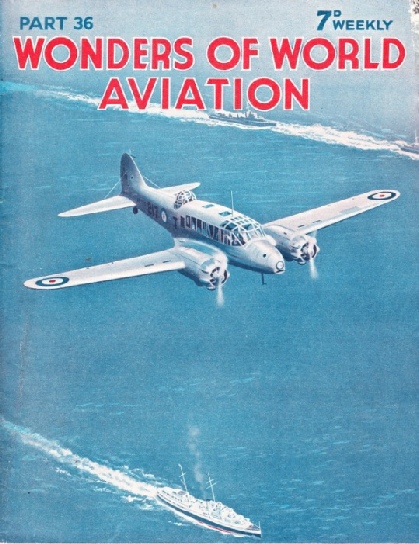
Circling the Globe
This chapter describes Howard Hughes’s great feat of “flying round the world” in July 1938. To say that Hughes flew round the world is, perhaps, something of an exaggeration, for, in fact, he made a large circuit round the North Pole; but the flight remains one of the greatest in the story of aviation.
Howard Hughes is a very remarkable man. A year or so ago I met him in Hollywood. People had told me that he was “just another millionaire come to Hollywood to spend his money”. But when I talked to him I knew at once that there was a good deal more behind this young man than was at first apparent. He told me about his adventures when he made that astonishing flying picture, Hell’s Angels. He had been dissatisfied with the work of some of the pilots who were taking part in the production. They had complained about the machines. Hughes decided to show them how the aeroplanes should be handled.
He took up one of the oldest machines in use in the production, a bullet-riddled Sopwith Camel fitted with an 80 horse-power engine. The pilots had complained that this particular machine was unsafe, but Hughes decided to prove that they were wrong. He took the Sopwith up and tried a barrel roll at less than a hundred feet. His next recollection was to find himself on the ground, his goggles jammed into his cheeks (the scar was still there when I met him) and his nose broken. He had accomplished nothing except to prove that his pilots were right, but those same pilots came to regard him first as a flying man and then as the film producer who was employing them. And that is an invaluable distinction when you are dealing with temperamental pilots.
Hughes himself has been flying since he was fourteen. He has been a mail-plane pilot, and no one is more fitted to handle pilots than he. “Pilots,” he said on one occasion, “are like no other men on earth; they don’t care for money, they live for the day, and they’re so independent that they’ll tell the President where he heads in.” No truer words were ever spoken.
When he was twenty, Howard Hughes inherited his father’s machine-tool works in Texas. The works were valued at £4,000,000. His first ambitious effort in film production was Hell's Angels, which for sheer excitement has been surpassed by only one aviation picture before of since - and that was the recent production, Test Pilot. Hughes began to work on the story of Hell's Angels as soon as he had inherited his father’s factory. He spent three years on the production. During this period the talking pictures arrived, and without hesitation Howard Hughes turned his film into a talking picture also.
He took six months to cut the film down to reasonable proportions. He completed this task in time for the opening night only by working three days and nights continuously. Hughes holds several trans-American records, and in 1935 he set up a mile record of 352·6 miles an hour.
This is the sixth article in the series describing Great Flights.
Contents of Part 36
Aircraft Which Hover (Part 2)
Circling the Globe
James Byford McCudden, VC
Pilotless Aircraft
Pilotless Aircraft (photogravure supplement)
The Inventor of the Box-Kite
Winter Flying in Canada
The Royal Aircraft Establishment
Pageantry in the Air (Part 1)
Aircraft Which Hover (Part 2)
The concluding part to this chapter describing the attempts to solve with the helicopter the problem of vertical flight.
The article is concluded from part 35.
Pilotless Aircraft
Photogravure Supplement
HOISTING A DAMAGED QUEEN BEE ON BOARD A WARSHIP. Casualties to the pilotless aircraft are not unusual even when the aircraft are flying as high as 10,000 feet, but a hit does not always prevent the aircraft from making a good landing. By rapid salvage work when a badly hit aircraft reaches the water, complete losses can be avoided and many of the parts of the aircraft may be used again.
Pilotless Aircraft Photogravure Supplement - 2
CATAPULTS ARE USED FOR LAUNCHING radio-controlled aircraft. The catapult is first turned so that the aeroplane is pointing into the resultant wind caused by the movement of the ship and the natural wind. Before the catapult is released a “climb” signal is transmitted to the aircraft so that it will begin climbing as soon as it is released.
Pilotless Aircraft
This chapter deals with one of the most remarkable inventions of our time - the radio-controlled Queen Bee aircraft. This article describes the workings and control system of the. Queen Bee aircraft which are used for gunnery practice by the Navy and the Army.
James Byford McCudden, VC
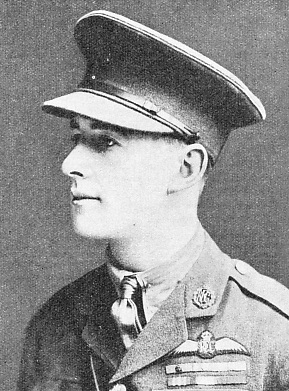 The story of the rise of an unknown bugler to one of the greatest air fighters of the war of 1914-
The story of the rise of an unknown bugler to one of the greatest air fighters of the war of 1914-18, James Byford McCudden.
McCudden rose to the rank of Major and was officially credited with having shot down fifty-seven enemy aeroplanes.
This article is the fifth article in the series Epics of Service Flying.
Messages Being Picked up at Hendon
MESSAGES BEING PICKED UP by aircraft of No. 4 Army Cooperation Squadron. The messages are attached to lines strung between uprights on the ground, and the lines are picked up by hooks on the ends of struts lowered from the aircraft. The struts can be pulled up and the messages retrieved by the observers whiles the aircraft are in flight.
Howard Hughes’ Lockheed 14 Air Liner
HOWARD HUGHES FLYING ABOVE NEW YORK at the beginning of his great flight. The aircraft he used was a Lockheed 14 air liner. Except that it had large petrol tanks, extra navigational equipment and that some of the cabin windows were omitted, the aeroplane was a standard model. The normal maximum speed of the Lockheed 14 is 265 miles an hour at 8,700 feet, and the service ceiling is 26,300 feet.
Pilotless Aircraft
Photogravure Supplement - 3
A MORE SPEEDY RADIO-CONTROLLED AIRCRAFT of the type known as the Queen Wasp. The engine is a 355 horse-power Armstrong Siddeley Cheetah IX radial. Streamlining and comfort when the aeroplane is flown by a human pilot are improved by the use of a cabin. The Queen Wasp is shown in this photograph with a wheel undercarriage, but, like the Queen Bee, it can be fitted with floats.
The Pescara Helicopter
SUPPORTED ON A FOUR-WHEELED CHASSIS, the Pescara helicopter had a vertical shaft with two superposed rotors which were turned in opposite directions by one 180 horse-power Hispano-Suiza engine . Each rotor consisted of six sets of small biplane wings, with an area of about 270 square feet and radiating like wheel spokes from a central shaft. The rotors revolved at a speed of about 200 revolutions a minute. In May 1924 the Pescara helicopter made a straight flight of 2,550 feet in 4 minutes 11 seconds at a height of about six feet from the ground.
The Queen Bee Aircraft
QUEEN BEE AIRCRAFT can be fitted with floats or with wheel undercarriages. When they are flown without a pilot for gunnery practice with live shells, floats are used because the aircraft will eventually have to alight on the water. The aircraft are never used for gunnery practice over land, because in the event of their crashing or making a forced landing after having been hit, they might fall on people or property.
Lawrence Hargrave: Inventor of the Box-Kite
Although Lawrence Hargrave is chiefly known as the inventor of the box-kite, he made invaluable researches into almost every aspect of heavier-than-air flight. This chapter is by Arthur Clark and is the sixteenth article in the series on Makers of Air History.
Winter Flying in Canada
Canada, where winter flying is as important as summer flying, is an excellent filed for solving the problems of snow, ice and long periods of temperatures below zero. In Canada, low temperatures call for ski undercarriages and special precautions in starting and running engines.
Winter Flying in Canada
AIRCRAFT ENGINES ARE CAREFULLY COVERED to protect them from the cold. Few heated hangars exist at the various landing grounds and the aeroplanes often have to remain in the open. The engine oil is drained out while it is warm and is heated before being poured in again. In addition, other precautions are taken. Precautions have also to be taken to prevent moisture from getting into restricted spaces on the aircraft, because if the moisture froze it might do considerable damage.
A Hargrave Kite
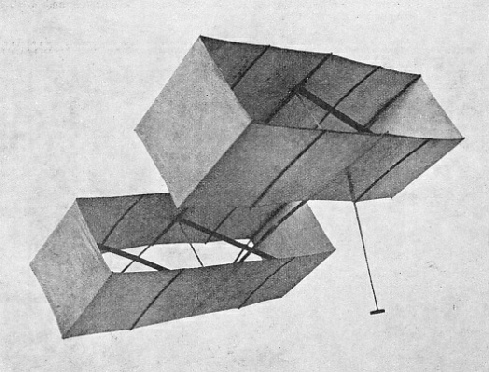 MODEL OF A HARGRAVE KITE of the type that
MODEL OF A HARGRAVE KITE of the type that
used in his man-lifting experiments in 1894. The area of the kite was ninety square feet. Hargrave used a string of kites in cascade; to the lowest one, which was similar to that shown in this photograph, he attached a seat. Hargrave succeeded in lifting himself in this way; he controlled his height by means of ground tackle
The Royal Aircraft Establishment
The work at Farnborough and its chequered history is the subject of this chapter. Few things connected with aviation have aroused more controversy, criticisms and even sneers than has the Royal Aircraft Establishment at Farnborough, in Hampshire. It has been held up by some as a paragon of all the aviation virtues, by others as a hindrance and an expensive hobby. The merits or demerits of Farnborough do not concern us here, but our work would be seriously incomplete without a chapter devoted to the Royal Aircraft Establishment. From all the controversy two facts emerge. One, that Farnborough, for better or for worse, has added many chapters to the story of British military aviation, and two, that despite all the criticisms the Royal Aircraft Establishment has remained.
Although I do not propose to take sides in this debate, if such a mild term can be used to describe the controversy about Farnborough, it would be idle to deny that some extremely valuable work has been done at the Royal Aircraft Establishment during its existence. If all its work had been bad all the time there would not have survived at Farnborough since 1890 a centre of activity which moved there from Woolwich, London, as the Balloon Equipment Store and was several times renamed as aeronautics developed.
Of the many storms that have centred in the Royal Aircraft Establishment, the worst has been that of the manufacturing of aeroplanes. During the period from 1905 to 1914 the Factory (as it then was) was bitterly attacked on the grounds that the highest efficiency in the design and production of military aircraft could not be obtained by a factory under Government control.
The authorities stood their ground, however, and, when the war of 1914-18 broke out, Farnborough was still the official factory; and it was then that it added another of the many chapters to the story of British military aviation, for the first British military aeroplane to land in France during the war was a product of the Royal Aircraft Factory. This machine was the famous B.E.2, which had been designed by Geoffrey de Havilland in 1912. It was the best known of all machines produced at Farnborough, and the forerunner of several notable types, including the S.E. and the F.E.
War-time exigencies caused the production of aircraft to be placed more and more with individual constructors, and gradually Farnborough concentrated on what many people regard as its true and most successful function - that of experimental and research work. In this capacity there can be no dispute that the Royal Aircraft Establishment has justified itself. Its early experiments with wing sections gave the lead to British designers and manufacturers. Today, the Royal Aircraft Establishment is a most elaborate organization and includes among its equipment the seaplane testing tank, which is used for studying the behaviour of seaplane hulls during taking-off and alighting and when riding at moorings. The best-known (and most criticized) of the modern equipment is the famous 24-feet wind tunnel. The work at Farnborough today includes experiments with helicopters, “Autogiro” aircraft and the Hafner gyroplane. It was at Farnborough that the first “Autogiro” aircraft was demonstrated in Great Britain.
The Hendon RAF Pageant (Part 1)
One of the most famous of the world’s flying grounds is that at Hendon. It was first used for flying in 1910. The idea for a Royal Air Force pageant first took shape in 1920. This chapter describes how the Royal Air Force display improved year by year until its discontinuation after 1937. The article is concluded in part 37.
The Parnall Monoplane
FOR STUDYING AIRFLOW over the wings of an aircraft at different speeds and different attitudes, this Parnall monoplane was provided with tufts of wool on the main plane. A cinematograph camera on the tail of the aeroplane photographed the movements of the wool tufts. The films could then be studied at leisure in relation to the speed of the aircraft and the position of its controls.
